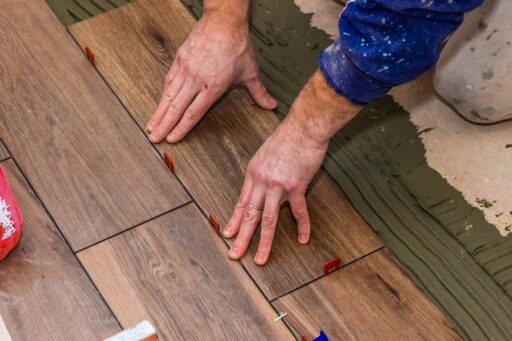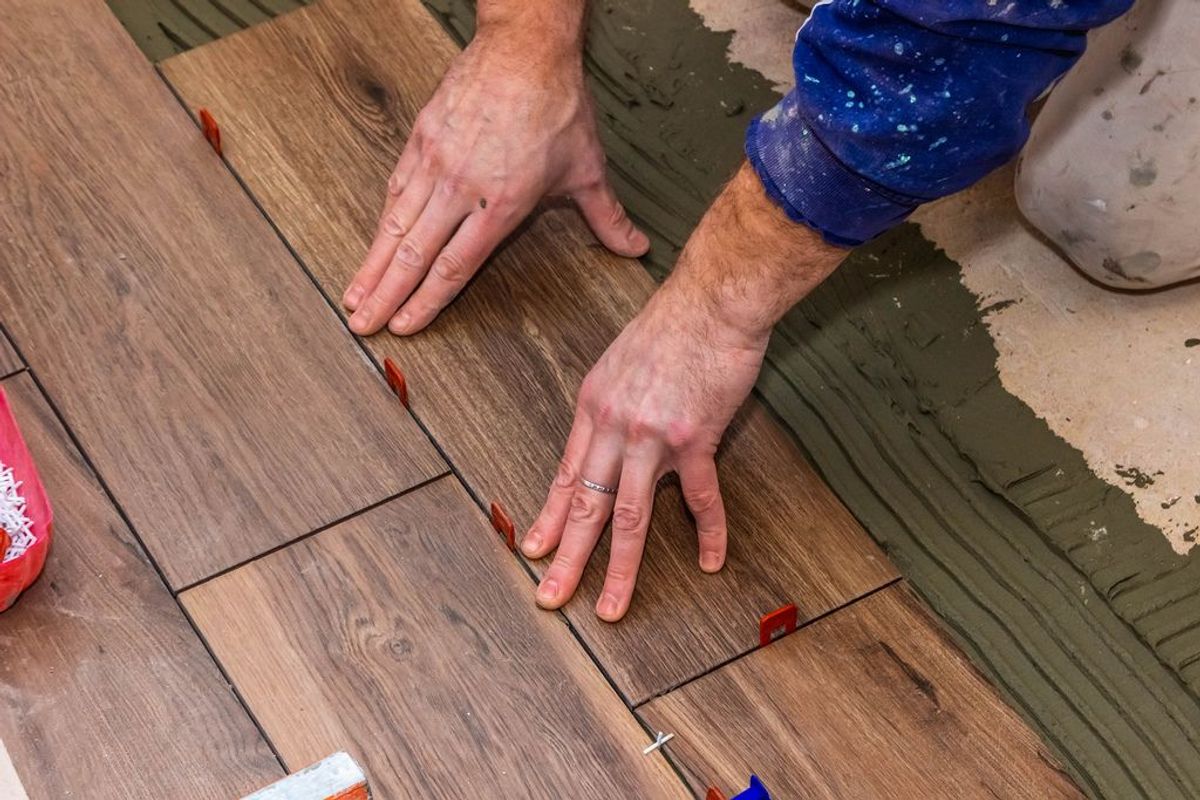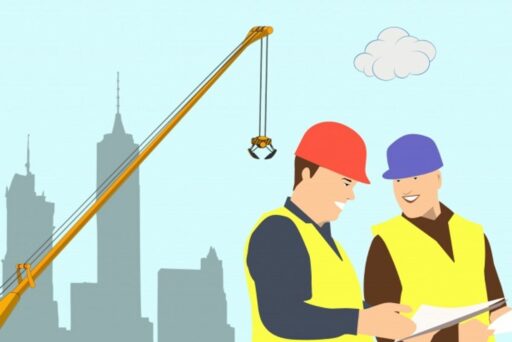When it comes to ensuring the safety and longevity of your property, selecting the right floor and joist repair contractor in Charleston, SC is crucial. This article provides an overview of the top contractors in the area, focusing on their credentials, services, repair techniques, and what homeowners can expect throughout the repair process. With a comprehensive understanding of local building codes, innovative technologies, and a commitment to quality and safety, these contractors stand out as leaders in the field of structural repairs.
Key Takeaways
- Top floor and joist repair contractors in Charleston, SC are distinguished by their credentials, use of quality materials, and understanding of local codes.
- Leading contractors offer comprehensive services including inspections, custom solutions, maintenance plans, and emergency support.
- Innovative repair techniques and integration of advanced technologies are hallmarks of top contractors, enhancing efficiency and sustainability.
- Homeowners can expect a thorough repair process, from initial consultation to post-repair inspections, ensuring compliance with HUD requirements.
- Safety and compliance are paramount, with contractors adhering to life safety standards, proper installation of systems, and securing final approvals.
Criteria for Selecting a Top-Notch Floor and Joist Repair Contractor

Assessment of Contractor Credentials and Certifications
When selecting a floor and joist repair contractor in Charleston, SC, verifying their credentials and certifications is paramount. Ensure the contractor holds relevant certifications from recognized institutions such as the International Association of Plumbing and Mechanical Officials (IAPMO) or the International Code Council (ICC).
- Certifications demonstrate a contractor’s commitment to industry standards and continuous education.
- Proper credentials indicate a legal and professional standing in the field.
- Specialized certifications, like those for safety (CHST, ASP, CSP) or fraud examination (CFE), can provide additional assurance of the contractor’s expertise.
It’s essential to request and review the contractor’s certificates. Attachments or screenshots from official websites with complete certificate information should be part of the documentation you examine.
Remember, a contractor’s qualifications are a direct reflection of their ability to perform high-quality repairs while adhering to the latest safety and building regulations.
Quality of Materials and Construction Techniques
Selecting the right materials and employing the best construction techniques are pivotal to the longevity and safety of any floor and joist repair project. Contractors must ensure that no substandard materials are used and that work is properly performed in accordance with HUD requirements.
- Inspect foundation, cement, framing, plastering, and structural elements such as studs, joists, and rafter spacing.
- Examine the grade, quality, and treatment of lumber, cement, lath, wire, and composition.
- Assure proper and safe installations of routine electrical systems.
Contractors should confer with developers, architects, engineers, and the general public to align expectations and ensure compliance with local building codes.
It is essential to apply proper inspection techniques to examine the quality of work and materials and detect deviations from plans, regulations, and standard construction practices. The integration of advanced diagnostic equipment can further enhance the accuracy of these assessments.
Understanding of Local Building Codes and Regulations
Selecting a contractor with a deep understanding of local building codes and regulations is crucial for ensuring that floor and joist repairs are compliant and safe. Contractors must be adept at interpreting and applying the myriad of federal, state, and local laws that govern construction practices in Charleston, SC. This includes being familiar with the specific requirements for residential, commercial, and industrial buildings.
Contractors should have the ability to detect deviations from approved plans and standard construction methods, ensuring that all workmanship meets the necessary standards. It’s not just about adhering to the rules; it’s about understanding the rationale behind them to provide solutions that are both compliant and functional.
Proficiency in this area is often demonstrated through a history of correcting local, state, and national code violations, and maintaining effective working relationships with various stakeholders. The table below outlines key aspects of code compliance that top contractors should manage effectively:
| Aspect | Description |
|---|---|
| Code Interpretation | Ability to read and interpret complex building plans and specifications. |
| Deviation Detection | Skills to detect and correct deviations from plans and regulations. |
| Material and Workmanship | Ensuring the use of approved building materials and quality workmanship. |
| Relationship Management | Maintaining good relationships with builders, contractors, and the local community. |
By prioritizing these factors, homeowners can be confident that their repair projects will not only be durable but also legally sound.
Client Testimonials and Portfolio of Completed Projects
When choosing a floor and joist repair contractor, client testimonials and a robust portfolio are invaluable for assessing quality and reliability. A contractor’s history of satisfied customers and a gallery of successful projects can speak volumes about their expertise and commitment to excellence.
- Positive Feedback: Clients often express satisfaction with the timeliness, communication, and end result of the repair work.
- Critical Reviews: It’s important to consider any negative feedback regarding the contractor’s services, as it can provide insight into potential areas of improvement.
Contractors should not only showcase their best work but also be transparent about how they address challenges and resolve customer concerns.
The following table summarizes the overall customer satisfaction ratings for a well-known contractor in the area, reflecting a commitment to maintaining high standards in all aspects of their work.
| Customer Satisfaction | Rating |
|---|---|
| Timeliness | 4.5/5 |
| Communication | 4.7/5 |
| Quality of Work | 4.8/5 |
| Overall Experience | 4.6/5 |
Comprehensive Services Offered by Leading Contractors

Inspection and Evaluation of Structural Damage
The initial step in floor and joist repair is a thorough inspection and evaluation of structural damage. This process involves a detailed examination of the affected areas to determine the extent of damage and the underlying causes. Professionals from Spartan Engineering Services in Charleston, SC, specialize in structural assessments, ensuring that any damage is accurately identified and appropriately addressed.
During the inspection, various elements are scrutinized, including the foundation, framing, plastering, and the spacing of studs, joists, and rafters. The grade, quality, and treatment of materials such as lumber, cement, lath, and wire are also evaluated to prevent the use of substandard materials, in line with HUD requirements.
It is crucial to conduct assessments after events like floods or earthquakes to ascertain the structural stability and safety conditions of buildings.
Understanding the local building codes, ordinances, and state statutes is essential for contractors to ensure that repairs meet all regulatory standards and that buildings are safe for re-occupation.
Custom Repair Solutions for Floors and Joists
When it comes to floor and joist repair, one size does not fit all. Each property presents its own set of challenges, requiring tailored solutions that address specific structural needs. Leading contractors in Charleston, SC, understand the importance of customizing repair strategies to ensure the longevity and safety of your home or building.
- Assessment of structural integrity
- Identification of damage extent
- Selection of appropriate repair materials
- Implementation of customized repair techniques
The goal is to not only restore the structural integrity but also to enhance the overall performance of the flooring system. Contractors take into account factors such as stud, joist, and rafter spacing, as well as the grade quality and treatment of materials used.
Ensuring that no substandard materials are used is paramount, and contractors often perform thorough inspections and evaluations throughout the repair process. This meticulous approach aligns with HUD requirements and guarantees that the work performed stands the test of time.
Routine Maintenance and Long-Term Care Plans
Ensuring the longevity and safety of floor and joist repairs goes beyond the initial fix. Top contractors in Charleston, SC, emphasize the importance of routine maintenance and long-term care plans to prevent future issues and extend the life of the repairs. These plans often include regular inspections, cleaning, and timely interventions to address minor wear and tear before it escalates.
- Regular inspections to detect early signs of damage
- Scheduled cleaning to maintain the integrity of materials
- Timely interventions for minor repairs
- Guidance on proper care and usage to clients
A well-structured maintenance plan not only safeguards the investment but also provides peace of mind for homeowners, knowing that their property is under consistent professional oversight. Contractors typically offer customizable plans to fit the unique needs of each property, ensuring that all aspects of floor and joist health are monitored and maintained.
Choosing a contractor with a robust maintenance program is crucial. It’s a proactive approach that can significantly reduce long-term costs and inconvenience. When reviewing potential contractors, consider their maintenance offerings as a key factor in your decision.
Emergency Repair Services and Support
When unexpected damage strikes, homeowners need reliable emergency repair services that can respond swiftly to prevent further harm to their property. Top contractors in Charleston, SC, offer 24/7 emergency support, ensuring that urgent health or safety deficiencies are addressed promptly. These services are crucial for mitigating risks and securing the integrity of your home’s structure.
Emergency repair programs are implemented with a thorough inspection to verify the need for immediate action. Once authorized, contractors swiftly mobilize to rectify issues such as compromised roofs, foundational weaknesses, or critical mechanical system failures. The process is streamlined to minimize disruption and restore safety as quickly as possible.
It is essential for contractors to maintain all necessary documentation to meet HUD requirements, ensuring that every emergency repair adheres to strict standards.
Contractors are also tasked with recruiting new professionals to expand their emergency response capabilities. This proactive approach guarantees that a skilled team is always on standby, ready to tackle any urgent repair needs that may arise.
Innovative Repair Techniques and Technologies

Advanced Diagnostic Equipment for Accurate Assessments
The integration of advanced diagnostic equipment is pivotal in the accurate assessment of floor and joist damage. Contractors equipped with the latest tools can pinpoint structural issues with greater precision, leading to more effective repair strategies.
Utilizing cutting-edge technology not only enhances the accuracy of diagnoses but also minimizes the disruption to the property during the inspection phase.
In Charleston, SC, top contractors employ a variety of diagnostic tools, including but not limited to:
- Ultrasonic testers for detecting internal defects
- Moisture meters to identify water damage
- Infrared cameras for thermal imaging and insulation checks
- Laser scanners for detailed surface mapping
These technologies enable contractors to deliver a comprehensive evaluation of the damage, which is essential for developing a tailored repair plan. The use of such equipment reflects a contractor’s commitment to quality and their understanding of the importance of a thorough inspection.
Eco-Friendly and Sustainable Repair Materials
In the realm of floor and joist repair, the use of eco-friendly and sustainable materials is not just a trend but a commitment to environmental stewardship. Contractors in Charleston, SC, are increasingly incorporating materials that have a lower impact on the planet, aligning with the preferences of eco-conscious homeowners.
- Recycled or reclaimed wood is a popular choice for flooring, offering a unique aesthetic and history while reducing waste.
- Bamboo has gained traction due to its rapid renewability and durability.
- Cork is not only sustainable but also provides excellent insulation and comfort underfoot.
- Low-VOC (Volatile Organic Compounds) adhesives and finishes contribute to healthier indoor air quality.
Emphasizing the use of sustainable materials is not only beneficial for the environment but also adds long-term value to properties. Contractors who prioritize these materials are often seen as forward-thinking and responsible, qualities that resonate with today’s market.
Selecting the right materials is crucial for ensuring that the repair work lasts and remains in harmony with the environment. Contractors who offer a range of eco-friendly options demonstrate their commitment to both quality craftsmanship and ecological responsibility.
Integration of Smart Home Systems in Repairs
The incorporation of smart home technology into floor and joist repairs is becoming increasingly popular among Charleston’s top contractors. Smart systems can monitor structural health, alerting homeowners to potential issues before they become serious. These systems can be integrated into existing home networks, providing seamless control and monitoring capabilities.
- Real-time monitoring of structural integrity
- Automated alerts for maintenance needs
- Easy integration with existing home automation
- Enhanced longevity and performance of repairs
By leveraging smart technology, contractors offer a proactive approach to maintenance, ensuring that repairs last longer and perform better. This not only saves homeowners money in the long run but also provides peace of mind knowing that their home’s structural health is being continuously monitored.
The use of smart systems is a testament to the contractors’ commitment to innovation and customer satisfaction. It reflects a forward-thinking approach that prioritizes the safety and convenience of homeowners while embracing the latest advancements in home repair technology.
Utilization of Prefabricated Components for Efficiency
In the realm of floor and joist repair, the utilization of prefabricated components stands out as a game-changer for efficiency. These ready-made elements are designed to be quickly and seamlessly integrated into existing structures, significantly reducing on-site construction time and labor costs.
Prefabricated components not only streamline the repair process but also ensure a high level of precision and quality control. Manufactured in controlled environments, these elements adhere to stringent standards, minimizing the risk of defects and inconsistencies.
Contractors in Charleston, SC, are increasingly adopting this approach, recognizing the benefits it brings to both the project timeline and overall budget. Below is a list of advantages that prefabricated components offer:
- Speedier construction and repair times
- Reduced labor and on-site resource requirements
- Enhanced quality assurance from factory settings
- Less waste and environmental impact
- Easier compliance with HUD and local building codes
By incorporating prefabricated components, contractors can deliver repairs that are not only swift but also sustainable and compliant with the latest regulations.
Navigating the Repair Process: What to Expect

Initial Consultation and Damage Assessment
The journey to restoring the integrity of your floors and joists begins with an initial consultation and damage assessment. During this phase, contractors will conduct a thorough examination of the affected areas, identifying signs of damage such as uneven or sagging floors, which are indicative of underlying issues. A detailed inspection report is prepared, capturing the extent of the damage and the necessary corrective actions.
Following the assessment, a clear plan is outlined, addressing the specific needs of your property. This plan includes a breakdown of the projected costs, which, according to Angi, can range from $10 to $67 per square foot for floor joist repairs. It’s crucial to discuss the proposed repair methods, materials, and any available financing assistance to ensure that the solutions align with your expectations and budget.
The consultation is not just about assessing damage; it’s an opportunity to build a rapport with the contractor, ensuring clear communication and understanding throughout the repair process.
Detailed Project Planning and Timeline Establishment
Once the initial consultation and damage assessment are complete, the focus shifts to detailed project planning and timeline establishment. This phase is critical as it sets the stage for the entire repair process, ensuring that all parties are aligned with the project’s scope, budget, and schedule.
- Review project plans and drawings for code compliance.
- Coordinate with engineers, contractors, and city staff on project progress.
- Ensure all documentation, such as the bill of materials and contracts, are synchronized and accurate.
Effective project planning is not just about adhering to timelines; it’s about creating a blueprint for success that encompasses all aspects of the repair work.
The timeline is not just a schedule; it’s a commitment to efficiency and transparency. Contractors will establish milestones and checkpoints to monitor progress and make adjustments as needed. This proactive approach minimizes disruptions and ensures that the repair work is completed within the agreed-upon timeframe.
Permit Acquisition and Compliance with HUD Requirements
Navigating the complexities of permit acquisition and ensuring compliance with HUD requirements is a critical step in the repair process. Contractors must be diligent in maintaining all necessary documentation to meet HUD standards, which includes working closely with local building inspections and code enforcement departments. This collaboration helps resolve any compliance issues with city codes and regulations.
The permit application process demands attention to detail, as it involves reviewing plans for ADA compliance, energy efficiency, and safety in accordance with the Fair Housing Act. It’s essential that applications are complete and accurate, and that they track all local, state, and federal codes.
Once permits are secured, contractors must continue to adhere to HUD regulatory requirements throughout the project. This includes periodic reviews of Housing Rehabilitation project files and implementing emergency repair programs when urgent health or safety deficiencies are identified. Contractors are also responsible for recruiting new contractors for participation in the rehabilitation program, ensuring a continuous improvement in service quality.
Post-Repair Inspections and Quality Assurance
After the completion of floor and joist repairs, a rigorous post-repair inspection is crucial to ensure the longevity and safety of the work done. Quality assurance protocols are strictly followed, with inspectors performing field inspections to monitor quality control and evaluate the workmanship. This includes testing the quality and quantity of materials used, as well as the stability of the work site.
Inspections are not only about adherence to the initial plans and specifications but also about compliance with local PWD codes and regulations. Inspectors are responsible for detecting any code violations and ensuring that all deficiencies and deviations from the set standards are documented and corrected.
The final phase of the repair process involves a thorough review of the contractor’s work product, ensuring that no substandard materials have been used and that the structural integrity of the building is uncompromised.
It is also essential for contractors to interface effectively with homeowners, providing clear explanations and reassurances about the work completed. The ultimate goal is to achieve compliance with HUD Housing Quality Standards and to secure the necessary certificates of occupancy.
Ensuring Safety and Compliance in Repair Work

Adherence to Life Safety and Fire Protection Standards
Ensuring the safety of occupants and compliance with fire protection standards is a critical aspect of floor and joist repair work. Contractors must be well-versed in the life safety code and local fire regulations to effectively safeguard against potential hazards. This includes the installation of fire-resistant materials and the integration of fire suppression systems where necessary.
The importance of adhering to fire safety standards cannot be overstated. It is not only a matter of regulatory compliance but also a crucial step in protecting lives and property.
Contractors should also be familiar with the latest fire safety retrofitting techniques, which can significantly enhance the safety of an existing structure. The following list outlines key considerations for fire safety compliance:
- Understanding and application of the National Fire Protection Association (NFPA) codes
- Regular updates and maintenance of fire safety equipment
- Coordination with local fire departments for inspections and approvals
- Documentation of compliance efforts and system installations
Proper Installation Techniques for Mechanical Systems
Ensuring that mechanical systems are installed correctly is crucial for the safety and functionality of any building. Proper installation techniques are not only a matter of compliance but also of efficiency and longevity of the systems. Contractors must be well-versed in the latest standards and practices to deliver quality workmanship.
- High School Diploma or equivalent education is a basic requirement for mechanical inspectors.
- A minimum of five years of supervisory construction experience is essential.
- Preferred qualifications include a Bachelor’s degree in mechanical engineering or a related field.
- Relevant licensure or professional certifications are expected for the position.
It is imperative that contractors adhere to building code requirements related to mechanical systems to prevent future complications and ensure a seamless operation. The integration of mechanical systems should be approached with meticulous attention to detail, considering the unique specifications of each project.
Accessibility and Means of Egress Considerations
Ensuring accessibility and safe egress is paramount in any repair work, especially when it comes to floors and joists. Contractors must account for the movement of all individuals, including those with disabilities, ensuring that the environment is navigable and free from hazards.
Repair strategies should incorporate the principles of universal design, allowing for the use of the space by everyone, regardless of their physical abilities.
Contractors should also consider the following:
- The placement and stability of scaffolding and temporary structures.
- The provision of clear and unobstructed pathways during and after repairs.
- The installation of handrails and guardrails where necessary.
- The use of non-slip surfaces to prevent accidents.
Compliance with local building codes is not just about legality; it’s about maintaining a safe environment for both workers and occupants. This includes understanding the specific requirements for reasonable accommodations for individuals with disabilities and ensuring that all safety precautions are met to mitigate risks such as extreme weather, electrical hazards, and other occupational dangers.
Certificates of Occupancy and Final Approvals
Obtaining the certificate of occupancy is a pivotal moment in the repair process, signifying that the work complies with local building standards and regulations. This document is the final green light for occupancy and use of the space, following a series of inspections that cover various aspects of the construction, including electrical, plumbing, and HVAC systems.
The certificate of occupancy is not just a formality; it is a comprehensive affirmation of a property’s safety and readiness.
Before this certificate is issued, contractors must ensure that all previous inspections have been approved. This includes footing, structural, insulation, and architectural component inspections, as well as a review of the site plan. The process is rigorous and requires attention to detail to ensure that every element of the building meets the necessary standards.
In Charleston, SC, as in many other regions, the zoning permits process involves a thorough review, especially in flood-prone areas, which require additional documentation. Contractors in Alabama and similar states need to possess specific certifications to demonstrate their commitment to safety and quality compliance.
Conclusion
Choosing the right floor and joist repair contractor in Charleston, SC, is crucial for ensuring the structural integrity and longevity of your property. The contractors discussed in this article have demonstrated expertise in adhering to building codes, utilizing quality materials, and employing skilled workmanship across a variety of construction scenarios. Whether dealing with new constructions, renovations, or routine inspections, these professionals are equipped to handle the complexities of structural member factors, electrical systems, and life safety features. Their ability to navigate the intricacies of mechanical, plumbing, and green building components, along with their commitment to meeting HUD requirements, positions them as top contenders for any repair or remodeling project. Remember to engage with contractors who not only have the technical know-how but also prioritize safety, customer satisfaction, and code compliance to ensure that your investment stands the test of time.
Frequently Asked Questions
What credentials should a top-notch floor and joist repair contractor in Charleston, SC have?
A reputable contractor should have valid licensing, certifications, and insurance. They should also have a strong understanding of local building codes and HUD requirements, as well as a proven track record with inspections of structural elements like studs, joists, and rafters.
How can I ensure the materials used for my floor and joist repairs are of high quality?
You should discuss with your contractor the grade, quality, and treatment of materials like lumber, concrete, and wire. Ensure they source from reputable suppliers and comply with local building standards and HUD requirements.
What kind of maintenance plans do leading floor and joist repair contractors in Charleston offer?
Leading contractors typically offer routine maintenance plans to ensure the longevity and safety of your repairs. These plans may include regular inspections, preventative measures, and emergency repair services.
What innovative repair techniques should I look for in a contractor?
Look for contractors who use advanced diagnostic equipment for accurate assessments, eco-friendly materials, smart home system integrations, and prefabricated components to enhance efficiency and sustainability.
What is involved in the repair process for floors and joists?
The repair process generally involves an initial consultation, a detailed damage assessment, project planning with a timeline, permit acquisition, and post-repair inspections to ensure quality and compliance with all regulations.
How do contractors ensure safety and compliance during repairs?
Contractors should adhere to life safety and fire protection standards, use proper installation techniques, consider accessibility and egress, and obtain all necessary certificates of occupancy to ensure full compliance with safety regulations.





